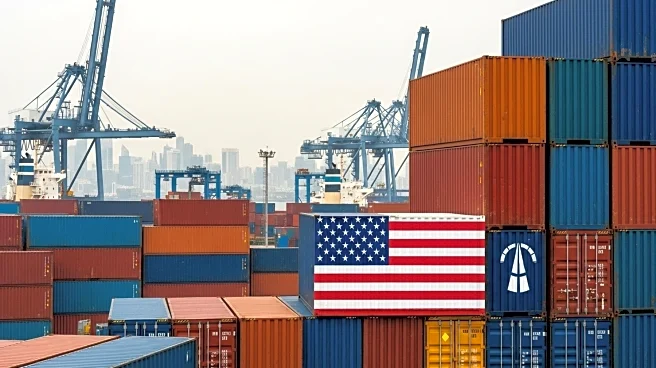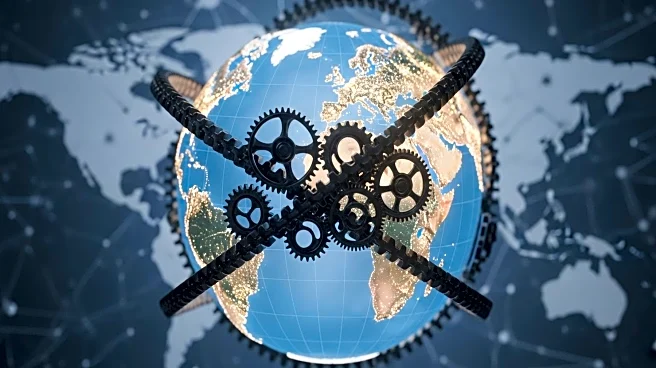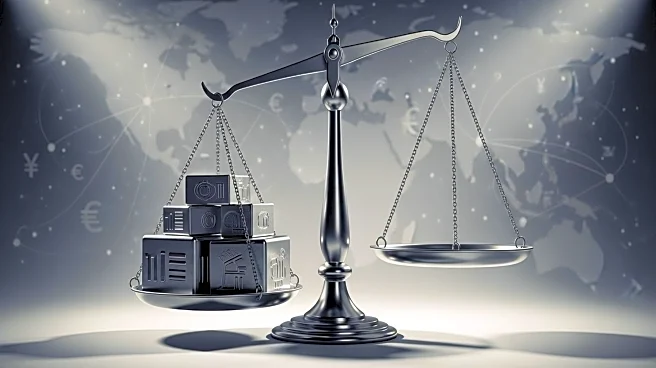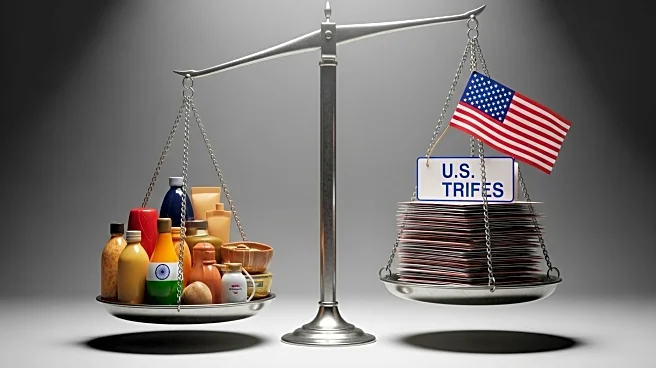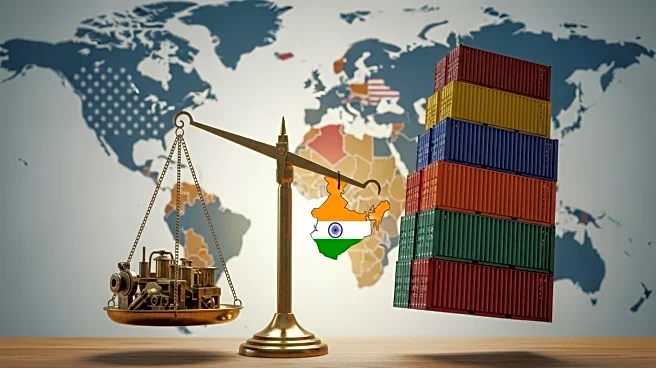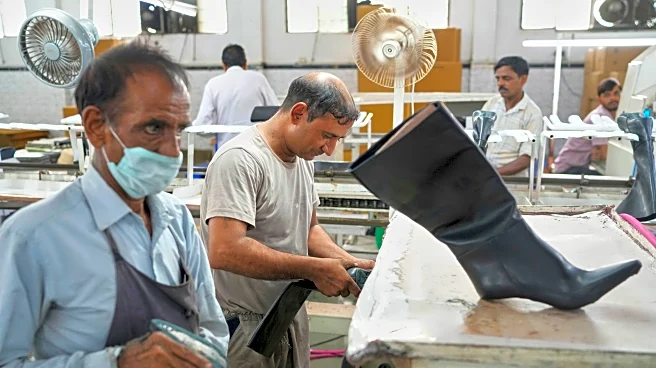What's Happening?
President Trump has implemented a 50% tariff on most imports from India, effective immediately. This decision follows an earlier imposition of 25% tariffs in early August, which was a result of unsuccessful trade negotiations between the United States and India. The additional tariffs were announced due to India's continued purchase of Russian oil. The tariffs are expected to significantly increase the cost of Indian products in the U.S., affecting sectors such as gems and jewelry, seafood, and textiles. However, certain categories, including pharmaceuticals, smartphones, computers, and other electronics, are exempt from these tariffs, representing about 30% of Indian exports to the U.S. The bilateral trade between the two nations was valued at $131.8 billion in the 2024-25 fiscal year, with India enjoying a trade surplus of $41.18 billion.
Why It's Important?
The imposition of these tariffs is likely to have significant economic repercussions for both countries. For India, the tariffs could lead to a decrease in exports to the U.S., affecting industries that rely heavily on the American market. This could result in economic strain and potential job losses in the affected sectors. For the U.S., consumers may face higher prices for Indian goods, which could contribute to inflationary pressures. The tariffs also reflect broader geopolitical tensions, particularly concerning India's energy purchases from Russia, highlighting the complex interplay between trade policies and international relations.
What's Next?
In response to the tariffs, India is planning to reduce its consumption tax by October to mitigate the impact on its economy. This move coincides with Diwali, a major shopping period in India. Additionally, Indian Prime Minister Narendra Modi has called for increased self-reliance and the promotion of 'Made in India' goods. The situation may lead to further diplomatic discussions between the two countries as they navigate the economic and political implications of the tariffs.
Beyond the Headlines
The tariffs underscore a growing trend of economic nationalism and protectionism, which could have long-term implications for global trade dynamics. As countries increasingly prioritize domestic industries, international trade agreements may face new challenges, potentially leading to a reconfiguration of global supply chains.






